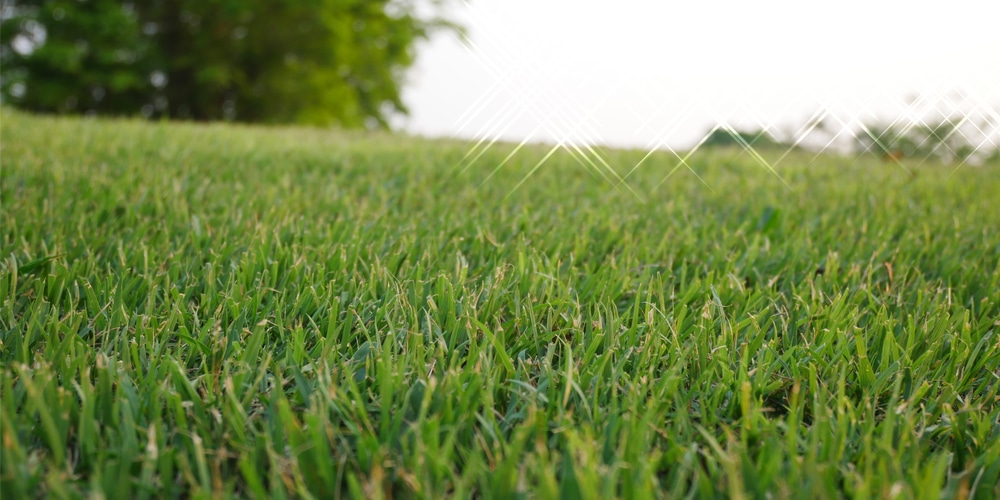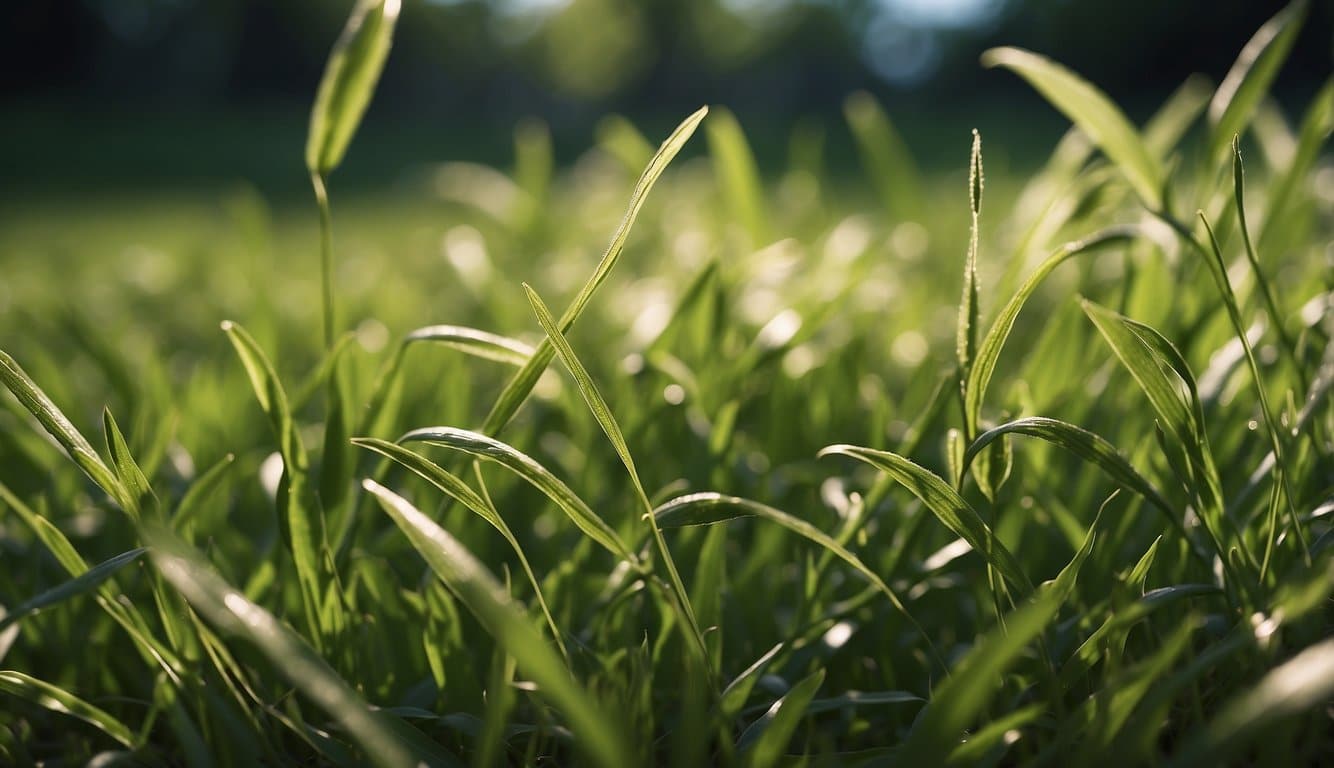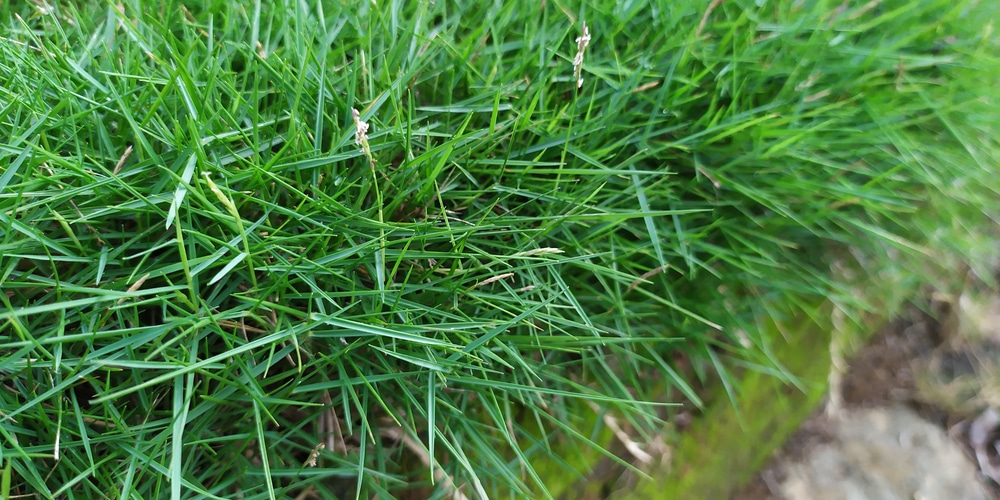Grass Seed Blends vs. Single Variety: What’s Best for You?
When considering the right grass for your lawn, you may encounter a choice between grass seed blends and single varieties. Both have advantages, so your decision largely depends on your lawn’s needs and your maintenance preferences.
Grass Seed Blends:
- Diversity: Blends are combinations of different cultivars of the same species, providing a broader genetic makeup.
- This diversity can lead to a more resilient lawn that’s better able to withstand various stressors like disease, drought, and wear.
- Uniformity: Despite the mixture, blends typically offer a uniform look as the grasses are genetically similar, meaning they have comparable color and growth patterns.
Single Variety:
- Specialization: Opting for a single variety means the grass has been chosen for specific traits, such as shade tolerance or fine texture.
- It can be the best choice for unique conditions where one type excels.
- Consistency: A lawn from a single variety presents consistent appearance and growth, which can make maintenance like mowing more straightforward.
Remember, assess your lawn’s conditions, such as climate, soil, and sun exposure, when selecting between these options. Blends might give you flexibility, while a single variety could provide specific benefits for certain conditions. Your choice should balance the grass’s characteristics with your lawn care routine and the desired outcome for your lawn.
Consider visiting sites like Swell Seed Co. or GreenView Fertilizer for more in-depth information on each type of seed. Additionally, understanding the labeling of grass seed can aid in making an informed selection.
Benefits and Drawbacks of Grass Seed Blends
When you’re aiming for the perfect lawn, the decision between grass seed blends and single variety seeds is crucial. Here’s a breakdown of the pros and cons of grass seed blends to guide your landscaping choices.
Pros of Seed Blends
- Improved Disease Resistance: Grass seed blends usually consist of multiple species which means they are less forgiving than a mix but better than single varieties in combating disease.
- Each variety brings resistance to different problems, so your lawn is less likely to succumb to a single disease.
- Greater Environmental Tolerance: A blend adapts better to different conditions. Whether it’s shade, sun, drought, or heavy rain, having multiple types of grass ensures at least some will thrive under varying weather and soil conditions.
- Uniform Growth Patterns: Blends often result in a more uniform lawn as they combine seeds that complement each other’s growth cycles and heights, leading to a consistent appearance and preventing patchiness.
Cons of Seed Blends
- Competition for Resources: The various species in a grass seed blend may compete for water, nutrients, and space, potentially hindering overall growth efficiency if not properly managed.
- Complex Maintenance: With different species come different needs; maintaining a lawn with a grass seed blend can require more knowledge regarding the care specific to each type.
- Potentially Higher Cost: Purchasing seed blends can be more expensive than single varieties, particularly if the blend includes premium or specialized grass types.
Advantages and Limitations of Single Variety Grass Seeds

Choosing the right type of grass seed is crucial for the health and aesthetics of your lawn. When it comes to single variety grass seeds, they come with their distinct set of pros and cons.
Pros of Single Variety
- Uniformity: Single variety grass seeds grow into a lawn that has a consistent look. This uniformity can be visually striking and is often preferred on golf courses where the uniform texture and color are desirable for gameplay.
- Specialization: When you choose a single variety seed, you’re selecting grass that excels in specific conditions. For instance, if you live in an area where drought is common, you could select a variety known for drought tolerance, allowing your lawn to thrive with less water.
- Ease of Maintenance: With a lawn of single variety grass, lawn care becomes simpler. You’ll have one set of guidelines for watering, mowing, and fertilizing, which results in more consistent care and fewer mistakes.
- Purity: Single variety grass seeds are pure, meaning they will only contain the seeds of one type of grass, eliminating the risk of unwanted species taking hold in your lawn.
Cons of Single Variety
- Lack of Diversity: A lawn made up of a single grass variety can suffer from a lack of genetic diversity. This may make it more susceptible to diseases and pests that can devastate the entire lawn, since all plants will have similar vulnerabilities.
- Climatic Limitations: Single variety seeds might not be well-suited for lawns that experience multiple types of climatic conditions throughout the year. They typically thrive in either cool or warm seasons, not both.
- Uniform Wear-and-Tear: The uniform nature of a single variety lawn also means that wear and tear from foot traffic or play will show more uniformly, which can lead to a need for more frequent repair or overseeding.
- Limited Adaptability: Your lawn may struggle to adapt if environmental conditions change. A single variety grass seed is much less adaptable to changes such as shifts in sunlight, water availability, or temperature compared to blended varieties.
Choosing the Right Grass Seed for Your Lawn
Selecting the proper grass seed for your lawn is fundamental to achieving a lush, healthy yard. Your choice will determine the longevity and appearance of your landscape.
Assessing Your Lawn’s Needs
- Sunlight Exposure: Gauge the amount of sunlight your lawn receives. Is it full sun, partial shade, or full shade?
- Soil Type: Is your soil sandy, clay, loamy, or something in between? Different grasses thrive in different soil conditions.
- Usage: Consider how your lawn is used. High-traffic areas require hardier grass species.
- Aesthetics: Do you prefer a lawn with a fine, carpet-like texture or are you okay with wider blades?
Climate Considerations for Seed Selection
- Temperature Range: Cool-season grasses, like Kentucky bluegrass, are ideal for northern areas with cold winters, whereas warm-season grasses, such as Centipede grass, excel in the Deep South.
- Regional Variability: Certain grass seed blends are formulated for specific regions, like the Pacific Northwest.
- Drought Tolerance: In areas prone to drought, look for grass varieties known for their water efficiency.
Care and Maintenance for Optimal Growth
To ensure your lawn thrives, precise care and maintenance are pivotal. Proper watering, fertilizing, mowing, and aeration techniques align with the unique requirements of your grass blend or single-variety lawn.
Watering and Fertilizing Practices
- Watering: Your lawn’s water needs depend on grass type and local climate conditions.
- For most grass types, aim for about 1 to 1.5 inches of water per week, either from rainfall or irrigation.
- Deep, infrequent watering is better than shallow, daily watering as it promotes root growth.
- Fertilizing:
- Conduct a soil test to determine the specific nutrient needs of your lawn.
- Typically, grass requires fertilization in the spring and fall. Use a balanced fertilizer tailored to your soil test results.
Mowing and Aeration Techniques
- Mowing:
- Adjust your mowing height according to the grass type. For example, cool-season grasses typically require a height of 2.5 to 3.5 inches.
- Always mow with sharp blades to prevent tearing the grass, which can lead to disease.
- Aeration:
- Aerate your lawn to relieve soil compaction and improve nutrient uptake.
- Perform aeration during your lawn’s peak growing season—spring or fall for cool-season grasses, and late spring through early summer for warm-season grasses.
Frequently Asked Questions
In exploring the best options for your lawn, understanding the balance between resilience and maintenance needs is key, as well as the impacts of climate and soil on your grass choice.
What are the advantages and disadvantages of using a grass seed blend?
Grass seed blends offer a versatile approach to lawn care. They are designed to bring together the strengths of different grass types.
This results in a lawn that can withstand various conditions and has a uniform look. One significant advantage is their resilience against multiple types of stressors, from pest attacks to foot traffic.
However, disadvantages may include inconsistencies in texture and color, as well as the difficulty of finding the right blend for your specific environment and care habits.
How does a single grass variety compare to a mixture for lawn maintenance?
A single grass variety can be easier to manage since all the grass has the same needs in terms of water, sunlight, and nutrients.
In contrast, a mixture might require more nuanced care, catering to different species’ distinct needs.
Yet, a single variety may not be as resilient as a mix, which can draw on the strengths of its diverse components to better resist diseases and pests.
What factors should be considered when choosing between grass seed blends and single varieties?
- Climate Adaptability: Evaluate how well different grass seeds will thrive in your region’s weather patterns.
- Soil Conditions: Determine which grass types are compatible with your soil’s pH level and nutrient content.
- Lawn Usage: Consider foot traffic and activity levels; high-traffic areas may benefit from sturdier blends.
- Maintenance Preference: Assess how much time and effort you are willing to invest in lawn care.
Can you mix different types of grass seed, and if so, what are the benefits?
Yes, mixing different types of grass seed can offer several benefits:
- Diversity: A mix can provide a combination of species that cover each other’s weaknesses, creating a robust and healthy lawn.
- Adaptability: A lawn with a mix of grass types is often better equipped to deal with climatic and environmental fluctuations.
What are the best conditions for using a single variety grass seed over a blend?
A single variety grass seed may be best for:
- Uniformity: If a consistent lawn appearance is your goal, a single variety ensures no variations in grass texture and color.
- Specific Conditions: When your lawn’s conditions match perfectly with the requirements of a particular grass type, it may flourish without the need for multiple species.
How do I determine the most suitable grass seed type for my lawn’s climate and soil?
To select the most suitable grass seed type:
- Climate Analysis: Research which grass species thrive in your local weather conditions. Include temperature ranges and precipitation patterns in your research.
- Soil Testing: Perform a soil test to understand its nutrient levels and pH balance. This information will guide your grass type choice.


